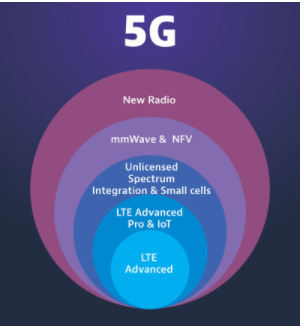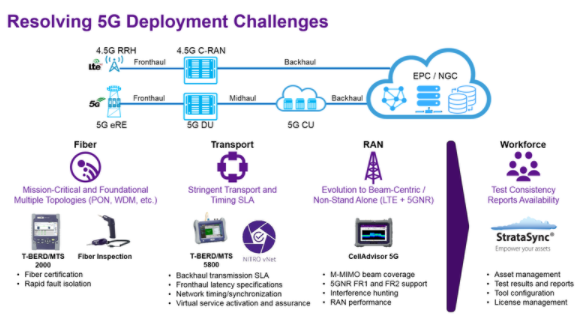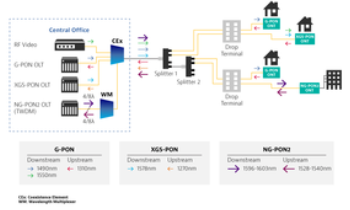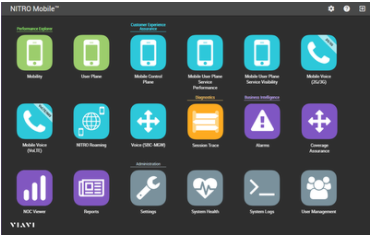Partnering with world class communication providers to deliver solutions needed to develop, test, enable, assure, and…
5G Deployment
Breakthrough technologies that are integral to 5G, such as Massive MIMO, network slicing, beamforming and network function virtualization (NFV) necessitate phased approaches to 5G deployment, as well as significant investment, with telecom companies expected to spend upwards of $300 billion on 5G network deployment over the next decade. This monumental task lends itself to a wide variety of strategies and options, each with inherent benefits and drawbacks.

The promise of 5G deployment has transitioned from the drawing board to reality as the 5th generation of wireless technology, planned and developed for nearly a decade now, begins limited service. While 5G will ultimately bring incredible speed, latency and service improvements, the fundamental architectural transformation makes this deployment a complex and multi-layered endeavor that can only be accomplished by the public and private sectors in aggregate across the globe.
5G Deployment Options
Throughout the 5G development cycle, operators and industry insiders studied the emerging trends, leading to the collective realization that expedited 5G deployment and standardization was necessary. As a result, 45 major players in the wireless industry convened in March of 2017 to create a 5G deployment plan entitled, “Way Forward on the overall 5G-NR eMBB workplan”.

Release of the 3GPP new radio (NR) non-standalone specification followed several months later. The non-standalone concept has been developed as a means of introducing 5G functionality on top of 4G/LTE infrastructure, which has led to a wide variety of potential 5G deployment scenarios.
The choice of standalone or non-standalone connectivity is just one of the variables to be considered when creating a 5G deployment plan. Integration of virtualization elements and edge computing, fronthaul and backhaul network configurations, small cell placement strategies, MIMO application and spectrum allocation make each 5G network truly unique. This level of customization requires scalable, accurate and efficient test solutions to support the disparate deployment models.
5G Deployment Options 3GPP
The 3rd Generation Partnership Project (3GPP) has defined multiple options for standalone and non-standalone 5G network deployment. Release 15 of the 5G specification, published in December of 2017, focused on the non-standalone options, with the first standalone specifications following in June of 2018. 5G deployment option 1 is simply legacy LTE with an evolved packet core (EPC). Option 2 is characterized by NR alone communicating with the 5G core network, without an LTE anchor. This standalone option requires continuous NR coverage in the target area. 3GPP deployment options 4, 5, and 7 all leverage the existing LTE infrastructure with differing modes of dual connectivity distinguishing each configuration.
5G Deployment Option 3X
To add more complexity to the mix, 5G non-standalone deployment option 3 is really three options in one with variants 3, 3A and 3X falling under the same umbrella. Each one uses the LTE base station as the signaling anchor, but each defines traffic protocols between elements slightly differently. Thus far, 5G deployment option 3X has garnered the most acceptance of these three 5G NR deployment options, since user data flows directly to the 5G gNB portion of the base station, which is designed to handle higher data rates. Option 3X also provides robust coverage at higher frequencies and almost no inherent interrupt time in LTE 5G mobility.
5G Deployment Challenges
With so many 5G deployment options to choose from, simply deciding which approach to take is the first of many inherent 5G deployment challenges. Breakthrough 5G technology platforms are pushing the envelope of design, manufacturing and testing capabilities. Network Function Virtualization (NFV) is a prerequisite for network slicing, intelligence at the edge and other essential 5G features that will power the delivery of IoT and AI-based services. Security issues, standards development and the requisite CPU horsepower to drive virtual functions are some of the many obstacles being tackled by NFV developers.

The millimeter wave is another essential 5G ingredient that can present technological and logistical challenges. Due to the limited range and inability to transmit through solid objects, the sheer volume of antennae required introduces hurdles that can only be addressed through methodical, incremental deployment. Spectral efficiency, measured in (bit/s)/Hz, is currently gated by the Shannon Limit which defines the maximum rate that data can be sent over any medium with zero error.
This theoretical ceiling is much less than what is expected and required for 5G deployment. Only Massive MIMO and beamforming, utilizing large antenna arrays, will enable 5G to effectively circumvent this natural speed limit.
Other 5G deployment considerations are more bureaucratic in nature. Local regulations, zoning and aesthetic concerns come into play when densely packed 5G hardware is positioned in common areas. Auctioning and licensing portions of the NR spectrum to various network operators can be a lengthy process, leading to delays in deployment as these allocations are finalized. On a global scale, privately funded 5G deployment may struggle to keep pace with state-funded deployment in other geographies. This could potentially lead to longer than planned reliance on non-standalone mode and the legacy wireless architecture.
5G Network Deployment
Unlike past historical transitions in wireless architecture, 5G represents an ongoing evolution of existing networks rather than the wholesale replacement or “forklift” approach to deployment that was utilized for LTE, with limited financial payback for operators. Incremental 5G network deployment, with initial 5G deployment layered on top of legacy architecture, is commonly viewed as a prudent way to reduce CapEx spending and minimize financial risk.
The service-based 5G architecture, along with network slicing technology, will facilitate a diversity of offerings that can enhance existing use cases while fulfilling many new ones. 5G deployment options are dependent on the business needs and preferences of the operator.
While enhanced mobile broadband (eMBB) is expected to be the biggest global use case, operators expecting to leverage the exponential increase in massive machine type communications (mMTC) or fixed wireless access (FWA) will tailor their 5G deployment strategy accordingly. The deployment model will depend on the densification and coverage required for targeted use cases and the allocated spectrum for each specific network.
5G Commercial Deployment
The number of 5G commercial deployments is expected to reach 55 globally in 2019, more than three times the total completed in 2018. This includes 21 new 5G deployments in Europe and 10 in Asia. This year-over-year increase is a clear signal of strong competition between commercial operators as they strive to enter the 5G marketplace. The completion of Release 16 of the 3GPP 5G specification should accelerate this pace, with more details and enhancements concerning industrial IoT, satellite integration, security and other pertinent topics expected in the upcoming release.
Much like the industry-wide collaboration that occurred to standardize 5G architecture, similar cooperation between operators, chipset, and infrastructure manufacturers, device makers and regulators will be imperative for successful 5G commercial deployment. With the broad 5G use case portfolio, additional industries such as automotive, medical device, agriculture and aerospace are now becoming part of the expanding coalition of stakeholders.
5G Deployment and Fibre
Although more emphasis is often placed on the wireless aspects of 5G technology, the role of fiber in 5G commercial deployment is pivotal, since most of the network infrastructure is made up of fiber. By 2023, approximately two thirds of all backhaul connections will be fiber-based. Connections between the next generation core (NGC) and NR active antennae are also completed using a fiber pathway. With the high volume of connections required for 5G fronthaul and midhaul applications, PON architecture is one option that can be scaled to accommodate the increased throughput demand. Validation of all fiber connections must be completed, making advanced 5G and fiber optic test solutions essential to 5G deployment.
5G Deployment Testing
Each discrete phase of 5G NR deployment requires a specialized tool kit to support successful implementation. During the technology verification and validation phase, test equipment capable of simulating real-world user behavior can help verify quality of service prior to activation.
The TM500 network tester can assess the complete 5G network user experience including simulated interactions with other users and typical real-world device behavior such as emailing and streaming. The TM500 also supports a high number of UE’s per cell or carrier to evaluate capacity.

During the deployment, activation and scaling phase, the spectrum and interference of 5G signals in the millimeter wave requires accurate analysis and characterization to facilitate installation and commissioning activities. The portable CellAdvisor 5G combines real time spectrum analysis and 5G beam analysis making it ideal for massive MIMO and antenna beam validation. The CellAdvisor also includes built in fiber test and inspection capabilities for added 5G deployment versatility.
The importance of testing continues through the assurance, optimization and monetization phase. In this phase of 5G deployment, Quality of Experience (QoE) becomes a primary concern for fully operational networks, with advanced applications such as the IoT and autonomous vehicles creating new monetization opportunities with low margin for error. This makes real time intelligence platforms such as NITRO Mobile essential for capturing, locating and analyzing mobile events for exceptional user experience insight.
Some have deemed 5G deployment to be a hallmark of the “sixth technological revolution”. Historically, this puts 5G on a level of importance equivalent to steam power, the assembly line, or the dawn of the computer age.
This distinction has led to 5G adoption spearheading a massive infrastructure and paradigm shift that has included the best engineers and scientists in the world. These experts have realized that the broad array of 5G use cases require both standardization and flexibility, which can often become contradictory forces. This same adherence to emerging specifications, coupled with functional versatility, makes the very best 5G test tools essential components of the 5G deployment landscape.

If you would like to find out more about how we can help you deploy 5G, get in touch!
Contact us here:
